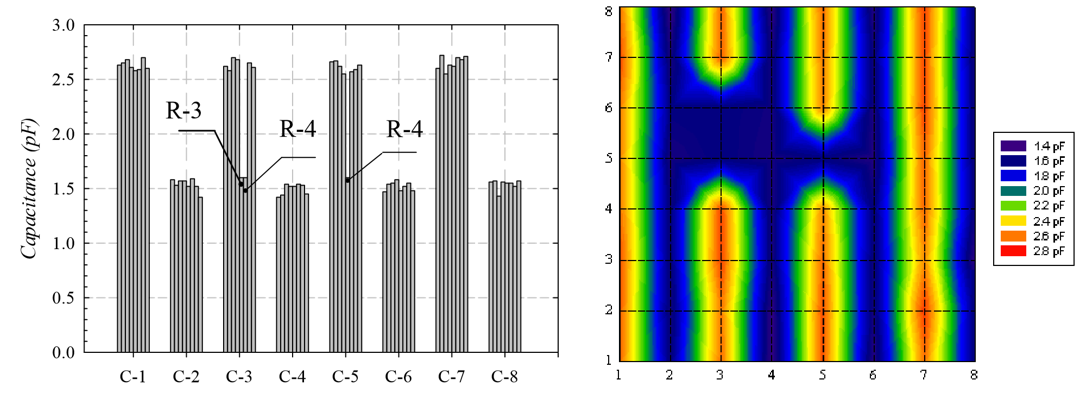A. A. Nassr1, W.W. El-Dakhakhni2, and M.T. Shedid3
- Graduate student, Center for Effective Design of Structures, Department of Civil Engineering, McMaster University, Hamilton, ON, L8S 4L7, Canada, nassraa@mcmaster.ca
- Martini, Mascarin and George Chair in Masonry Design, Center for Effective Design of Structures, Department of Civil Engineering, McMaster University, Hamilton, ON, L8S 4L7, Canada, eldak@mcmaster.ca
- PhD candidate, Center for Effective Design of Structures, Department of Civil Engineering, McMaster University, Hamilton, ON, L8S 4L7, Canada, shedidmm@mcmaster.ca
ABSTRACT
In this study, a new technique for detecting ungrouted cells in concrete block constructions was developed. The concept, based on detecting the local dielectric permittivity variations, was employed to design coplanar capacitance sensors with high sensitivities to detect such construction defects. An analytical model and finite element simulations were used to assess the influence of the sensor geometrical parameters on the sensor signals and to optimize the sensor design. To experimentally verify the model, dielectric properties of various materials involved in concrete masonry walls were measured. In addition, a masonry wall containing predetermined grouted and ungrouted cells was constructed, and inspected using the developed sensors in a laboratory setting. The proposed sensor design, coupled with a commercially available portable capacitance meter would facilitate employing this technique in the field for rapid inspection of masonry structures without the need for sophisticated data analyses usually required by other more expensive and time consuming methods.
KEYWORDS: concrete blockgrout; measurement; non-destructive tests; sensors
B2-4



